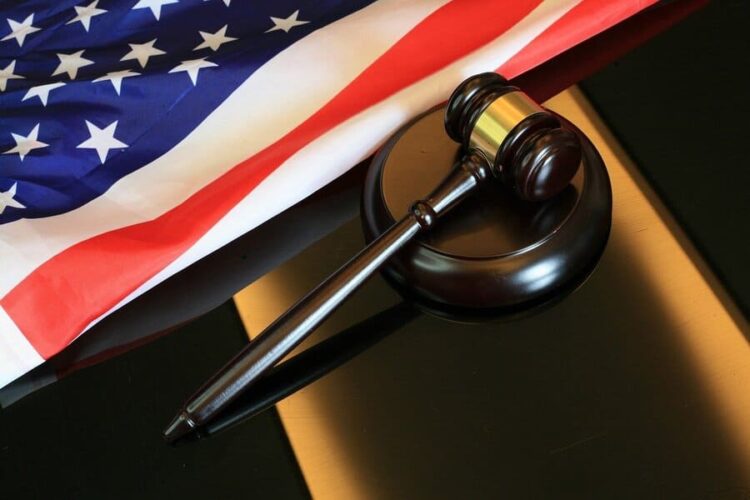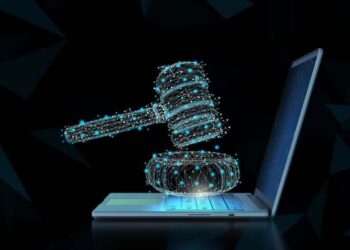Are you curious about the point at which legal proceedings step out of the shadows and become part of the public domain? Understanding when a lawsuit becomes a matter of public record is crucial, as it affects transparency, accountability, and the accessibility of legal information. In this article, we’ll delve into the intricacies of this process, shedding light on the factors that determine when court cases transition from private to public. Let’s embark on this journey to demystify the timelines behind the disclosure of lawsuits.
When Does A Lawsuit Become Public Record?
A lawsuit becomes a public record when it’s filed with the court. Once the case is officially docketed, it becomes public access unless sealing orders or legal exemptions apply.
The Journey To Public Disclosure
Introducing Lawsuits to the Public Realm A lawsuit takes its first step into the public eye when it is officially filed with the appropriate court. This foundational moment sets in motion a series of events that will eventually expose its details to public scrutiny. The Court’s Official Embrace: Once a lawsuit is docketed, it takes on a new significance. Docketing involves the formal recording of the case within the court’s system, marking its official presence within the public record. This procedural act ushers the case from the realm of confidentiality into one of public accessibility.
Making the Basics Accessible As the case’s journey unfolds, essential elements come to light. Basic information, including the names of the parties involved and initial complaints, becomes accessible to the public. This availability is facilitated through court databases or the assistance of court clerks, who serve as gatekeepers to this preliminary information. Public vs. Private Information: However, not all aspects of a case are laid bare immediately. Delicate intricacies, confidential details, and personal data might remain concealed or partially disclosed. Sensitive information is often redacted or sealed, striking a balance between the public’s right to know and the protection of individuals’ privacy.
As the legal narrative unfolds, we witness the transformation of lawsuits from confidential legal actions into matters of public interest. This transformation is guided by a complex interplay of legal procedures, considerations of transparency, and the safeguarding of private information.
The Gradual Unveiling
Initial Proceedings: Unfolding the Legal Drama As a lawsuit progresses through the intricacies of the legal system, a trail of documents is left in its wake. These documents, including motions, responses, and pleadings, chronicle the evolving narrative of the case. Importantly, many of these documents become part of the public record shortly after they are submitted. This incremental disclosure allows interested parties to follow the legal proceedings and gain insights into the evolving arguments and strategies.
Exceptions to Public Access: Navigating Complexities However, the path to full disclosure isn’t always straightforward. Some documents might remain beyond the public’s reach due to specific legal provisions or sealing orders. These exceptions serve to maintain the integrity of ongoing investigations, protect sensitive information, or ensure a fair trial. While transparency is valued, these safeguards underscore the importance of balanced access to information within the legal realm.
Settlements and Outcomes: Bringing Closure into the Light The culmination of a lawsuit is often marked by settlements, verdicts, or dismissals. These final outcomes typically become part of the public record, offering a comprehensive view of the case’s resolution. The inclusion of these outcomes within the public domain fosters accountability and allows for a holistic understanding of the legal process.
Digital Era Accessibility: A Digital Archive of Legal Records In the modern era, technology has reshaped the accessibility of court records. Many court systems have embraced digitalization, offering online platforms where the public can easily access and retrieve information about ongoing and concluded cases. This digital transformation streamlines the process of obtaining legal information, promoting broader public engagement with the legal system.
Factors Shaping Disclosure Timelines
- Nature of the Case: Disclosure timelines vary based on the type of case. Criminal cases, due to the gravity of charges, might become public sooner than other cases.
- Court Jurisdiction: Public access rules differ among jurisdictions. State laws and court policies dictate when case information transitions into the public domain.
- Sealing Orders: Courts can issue sealing orders to safeguard sensitive data. These orders, whether temporary or permanent, restrict public access to specific case details.
- Sensitive Information: Cases involving minors, personal health records, or trade secrets warrant special treatment. Disclosure might be delayed, or certain details redacted, to protect individuals’ privacy and confidential matters.
Balancing Transparency And Privacy
In the realm of legal proceedings, striking the delicate balance between transparency and privacy is paramount. Both concepts are essential pillars of a fair and just legal system, working in tandem to ensure accountability, protect individual rights, and maintain public trust.
Transparency:
Transparency in lawsuits refers to the openness and accessibility of court proceedings and records to the public, fostering a democratic society. It promotes accountability, trust, informed citizenship, and consistency in law application. Publicly conducted lawsuits motivate ethical and responsible actions among the parties involved. Open access to court records fosters public trust in the legal system, allowing citizens to participate in civic affairs and advocate for change. Legal professionals use cases as precedents, promoting predictability in law application.
Privacy:
Privacy is crucial in legal proceedings, protecting sensitive information and upholding individuals’ dignity. Privacy safeguards individuals’ dignity by shielding them from public scrutiny, especially in cases involving family disputes or health-related issues. It also ensures fair trials by preventing unnecessary exposure of sensitive details. Privacy also protects sensitive information, such as minors’ medical records or proprietary business information. Balancing privacy rights with transparency is a challenge, as courts must weigh public interest against potential harm. The balance between transparency and privacy is essential for a just and respectful legal system.
Understanding The Public’s Right To Know
Transparent Legal System
In a society built upon the principles of justice, accountability serves as the cornerstone of a fair legal system. When court records are made accessible to the public, the potential for hidden manipulation of legal proceedings is significantly diminished. The light of transparency shines upon every stage of a lawsuit, ensuring that judges, lawyers, and litigants are held accountable for their actions and decisions. This accountability fosters trust in the judicial system, reaffirming the belief that justice is dispensed without bias or prejudice. The public’s ability to scrutinize court proceedings promotes an environment where ethical conduct prevails, ultimately upholding the integrity of the legal process.
Informed Citizenship
The accessibility of court records isn’t just a procedural formality; it’s a gateway to informed citizenship. By providing the public with access to these records, a deeper understanding of legal processes and their implications is fostered. Citizens can track the trajectory of lawsuits, comprehend the arguments put forth, and witness the principles upon which judgments are rendered. This accessibility empowers individuals to engage in discussions about the legal system, participate actively in civic matters, and advocate for improvements. An informed citizenry isn’t just aware of their rights and responsibilities; they also play an active role in shaping the legal landscape for the betterment of society.
Media’s Role
The media serves as a bridge between the legal system and the general public, and public records play a pivotal role in this dynamic. When court records are open to scrutiny, journalists and media outlets can access accurate and comprehensive information. This access equips them with the resources needed to report on legal matters with precision and authenticity. The public’s right to know is exercised through the media, and a transparent legal system enables them to provide accurate insights, ensuring that society is well-informed about legal developments, landmark cases, and judicial decisions.
Historical Record
Beyond the immediate impact, the public accessibility of court records has a lasting historical significance. These records create a comprehensive archive of legal proceedings, offering a treasure trove for researchers, historians, and policymakers. Through the analysis of past cases, patterns, and trends, valuable insights are gleaned, informing the development of legal policies and the evolution of the justice system. The historical record preserved within these public documents is a testament to the growth and transformation of legal frameworks, guiding contemporary decision-making with the wisdom of the past.
Conclusion
In the intricate tapestry of legal proceedings, the moment a lawsuit becomes public record is a critical juncture. It’s a testament to the delicate balance between transparency and privacy within the legal realm. As technology advances, court records become more accessible, empowering citizens with knowledge and enabling a vigilant, informed society that can hold the legal system accountable.
FAQ’s
Q: Can any lawsuit be sealed from public access?
A: While sealing orders are possible, they’re granted under specific circumstances, such as protecting minors’ identities or sensitive trade secrets.
Q: What’s the purpose of redacting information?
A: Redacting information safeguards private or sensitive details, ensuring that only relevant, non-sensitive information is accessible to the public.
Q: How can I access public court records?
A: Many courts offer online databases where you can search for case information. You can also visit the court clerk’s office to request records in person. There are also dedicated public records lookup sites, such as Information.com, that can help you access court records.
Q: Can public records be used as legal precedents?
A: Yes, public court records can be used as references in legal arguments and to establish legal precedents in subsequent cases.
Q: What happens if a case is appealed?
A: The appellate process generally involves a review of the lower court’s decision. The records from the lower court become part of the appellate court’s public record.
Q: Are federal court records different from state court records?
A: Yes, federal and state courts have separate systems. Federal court records are accessible through the Public Access to Court Electronic Records (PACER) system.










